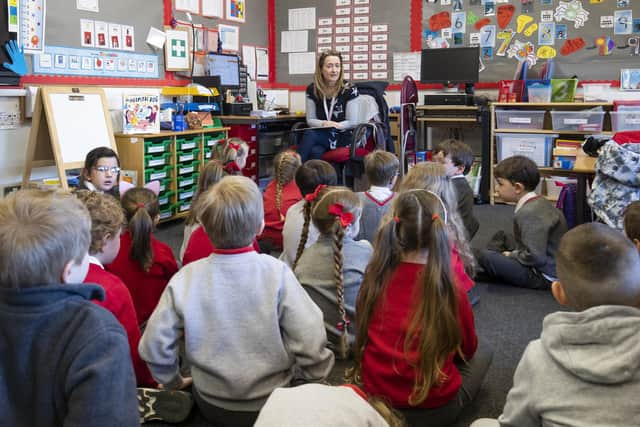Covid Scotland: Cases in under-15s at highest level recorded during pandemic
A total of 1,064 children aged between zero and 14 recorded a positive Covid test in the week to June 7, according to the latest figures from Public Health Scotland. The figure is four times higher than it was in early May.
Earlier this week, Dr Deepti Gurdasani senior lecturer in epidemiology at Queen Margaret University London, told The Scotsman that data showed school children were driving the epidemic in Scotland and called for urgent mitigation measures in schools.
Advertisement
Hide AdAdvertisement
Hide AdShe said on Wednesday the latest figures were an “entirely predictable consequence” of government policy on managing Covid in schools and warned the figures were likely to be underestimates.


Provisional figures indicate 15,687 pupils were absent for Covid-related reasons at the end of last week, with overall attendance dropping to 87.8 per cent – the lowest percentage since pupils returned after Easter.
The Scottish Government has previously pointed out that a large percentage of those children were absent due to the need to self isolate, rather than that they are actually suffering from Covid-19.
Dr Gurdasani said: “This is an entirely predictable consequence of the spread of the Delta variant and lack of mitigations within schools. Importantly, even the numbers we're seeing among school-age children are likely underestimates, given these are based on children having symptoms, and children are much more likely to not have symptoms of infection.
"We saw clear rises in infection rates even ahead of Easter in the ONS [Office for National Statistics] data, so the impact of school openings and closure on infection rates is clear and consistent across the UK.
"We should be very concerned, given the known risk of long Covid, and be cautious also given reports from other countries that children may be more affected by this new variant.”
The ONS stopped releasing data on surveillance of infection by age in Scotland following the Easter holidays.
Dr Gurdasani added: "While vaccines in adolescents are certainly welcome, given the rapid rises in case numbers, the risk to children, their families, and educational disruption, it's important to take urgent mitigatory measures in schools alongside planning for vaccination.
Advertisement
Hide AdAdvertisement
Hide Ad"These should include masks both in primaries and secondaries, attention to ventilation with monitoring and supplementation, where needed.
"[There should be] small class sizes and limited bubbles, minimising movement between these, moving classes and physical ed outside where possible.
"Schools should be supported with this adequately. It's vitally important we don't expose children to a new highly transmissible variant, the properties of which are not yet understood.”
Of the daily case numbers recorded in Scotland, around a quarter are in children aged under 15. However, when the size of the population in each age groups is factored in, it is clear that infection rates are considerably higher among young adults and older teenagers.
On June 7, the weekly case rate among people in their early 20s was 277.2 per 100,000, while older teenagers had the second highest rate, at 228.4 and for younger children it was 122.9.
A Scottish Government spokesperson said: “COVID-19 cases in schools remain low. The current rate of absence for COVID-related reasons amongst pupils is around 2%. The vast majority of these – about 85% - are pupils who are isolating, rather than being off because they have a COVID-related sickness.
“We continue to closely monitor the situation in schools and work with partners to ensure guidance reflects the latest scientific evidence and advice. We have confidence on the decisions made on managing local outbreaks by local public health teams in partnership with schools and local authorities.”
A message from the Editor:
Thank you for reading this article. We're more reliant on your support than ever as the shift in consumer habits brought about by Coronavirus impacts our advertisers.
If you haven't already, please consider supporting our trusted, fact-checked journalism by taking out a digital subscription.
Comments
Want to join the conversation? Please or to comment on this article.
